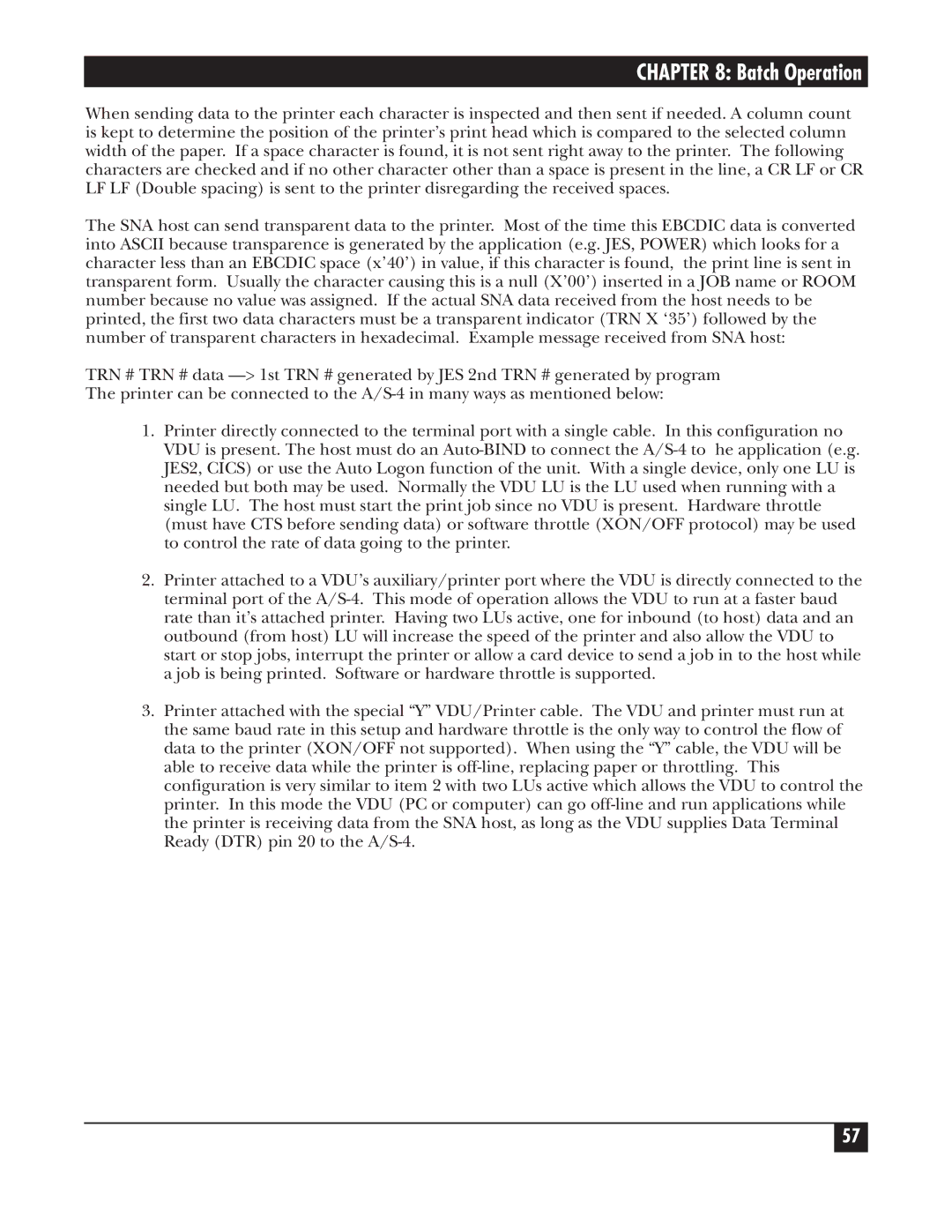
CHAPTER 8: Batch Operation
When sending data to the printer each character is inspected and then sent if needed. A column count is kept to determine the position of the printer’s print head which is compared to the selected column width of the paper. If a space character is found, it is not sent right away to the printer. The following characters are checked and if no other character other than a space is present in the line, a CR LF or CR LF LF (Double spacing) is sent to the printer disregarding the received spaces.
The SNA host can send transparent data to the printer. Most of the time this EBCDIC data is converted into ASCII because transparence is generated by the application (e.g. JES, POWER) which looks for a character less than an EBCDIC space (x’40’) in value, if this character is found, the print line is sent in transparent form. Usually the character causing this is a null (X’00’) inserted in a JOB name or ROOM number because no value was assigned. If the actual SNA data received from the host needs to be printed, the first two data characters must be a transparent indicator (TRN X ‘35’) followed by the number of transparent characters in hexadecimal. Example message received from SNA host:
TRN # TRN # data
1.Printer directly connected to the terminal port with a single cable. In this configuration no VDU is present. The host must do an
2.Printer attached to a VDU’s auxiliary/printer port where the VDU is directly connected to the terminal port of the
3.Printer attached with the special “Y” VDU/Printer cable. The VDU and printer must run at the same baud rate in this setup and hardware throttle is the only way to control the flow of data to the printer (XON/OFF not supported). When using the “Y” cable, the VDU will be able to receive data while the printer is
57
